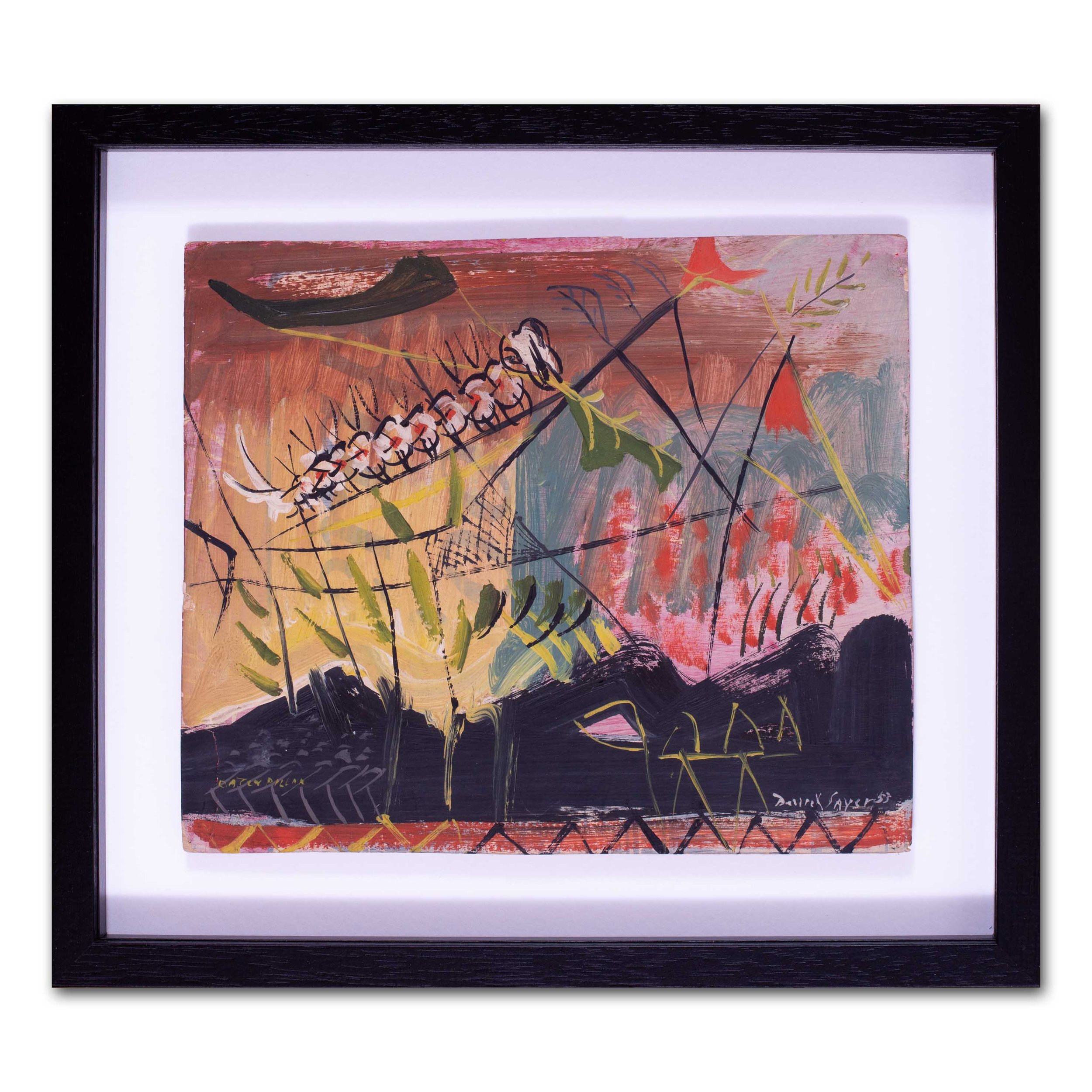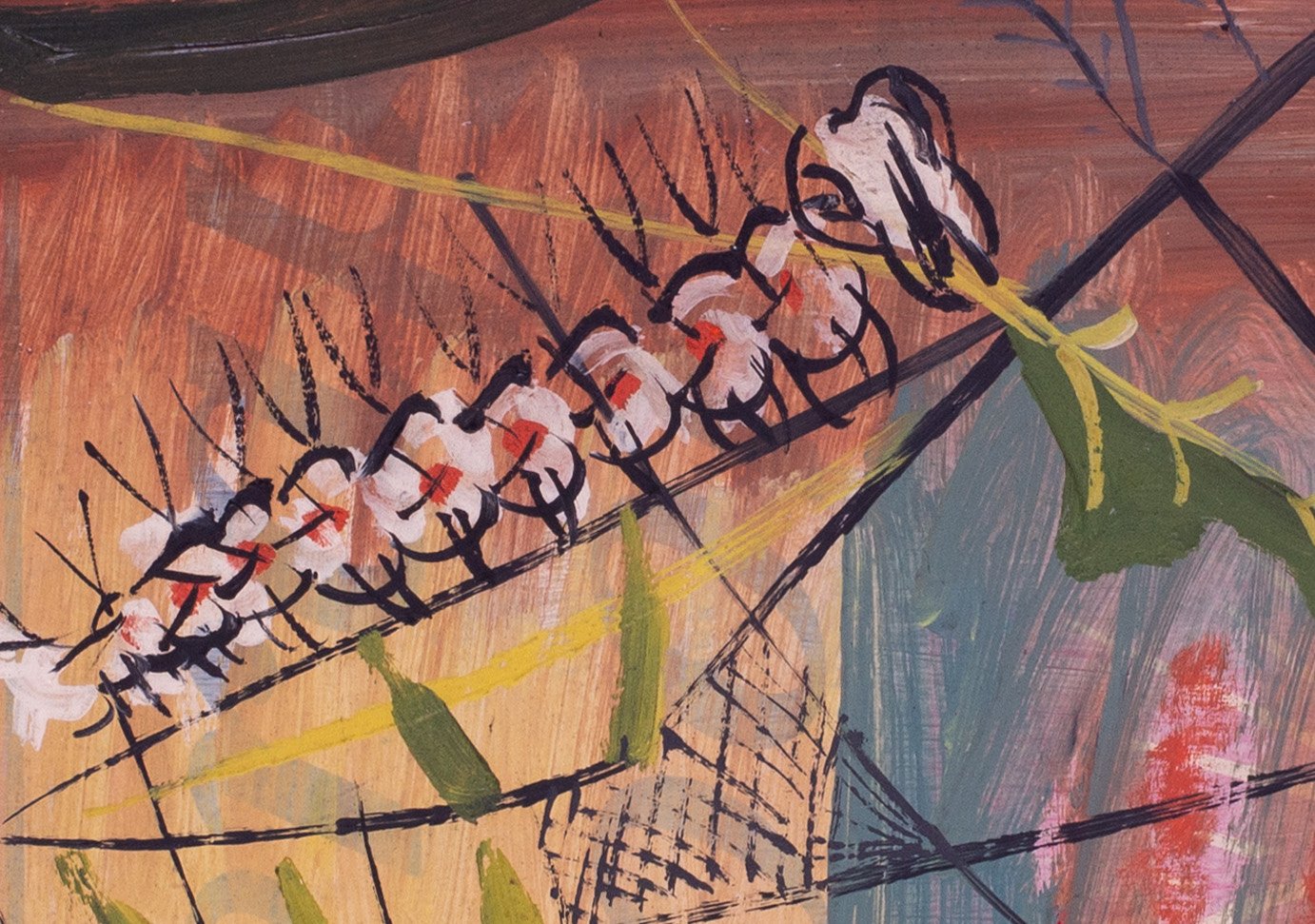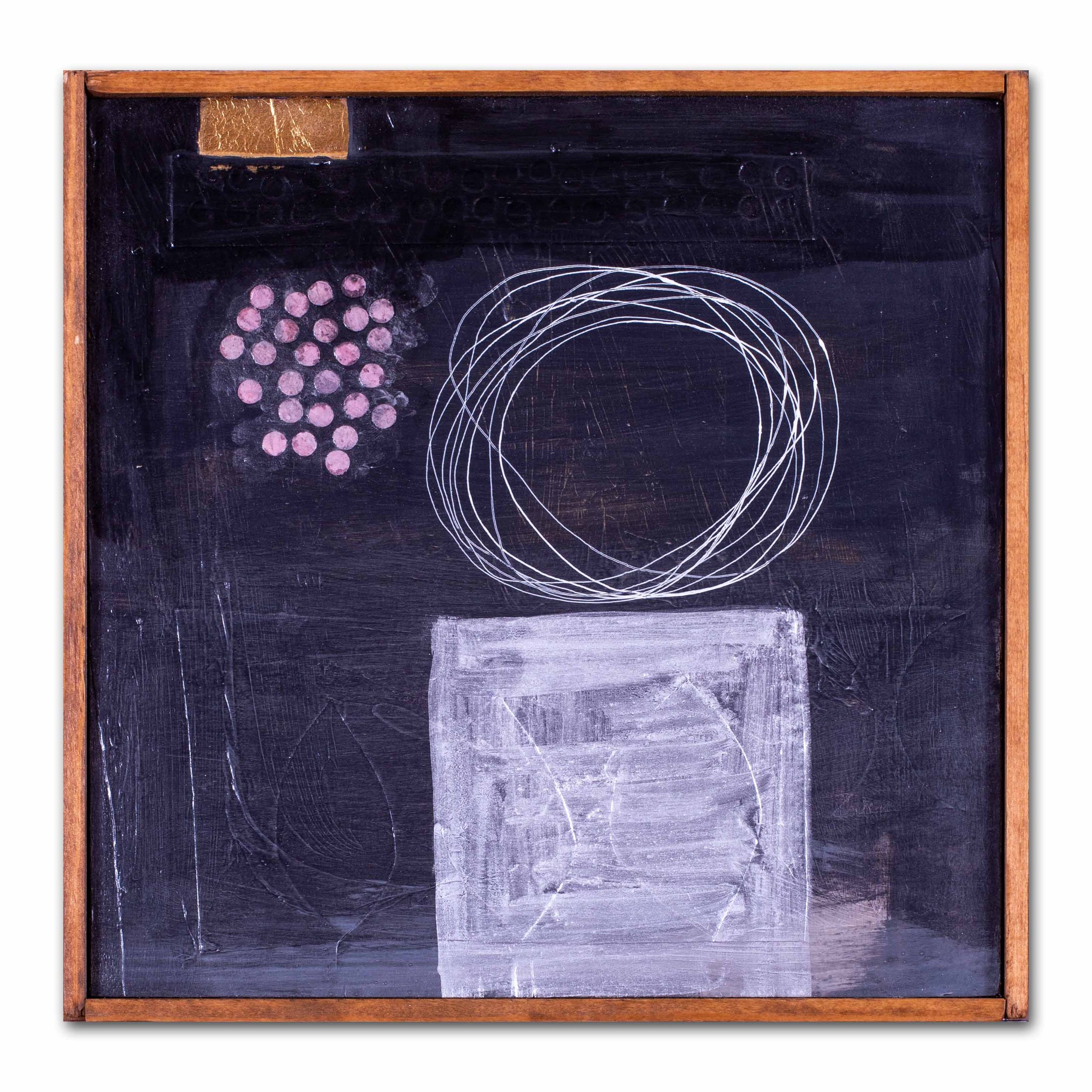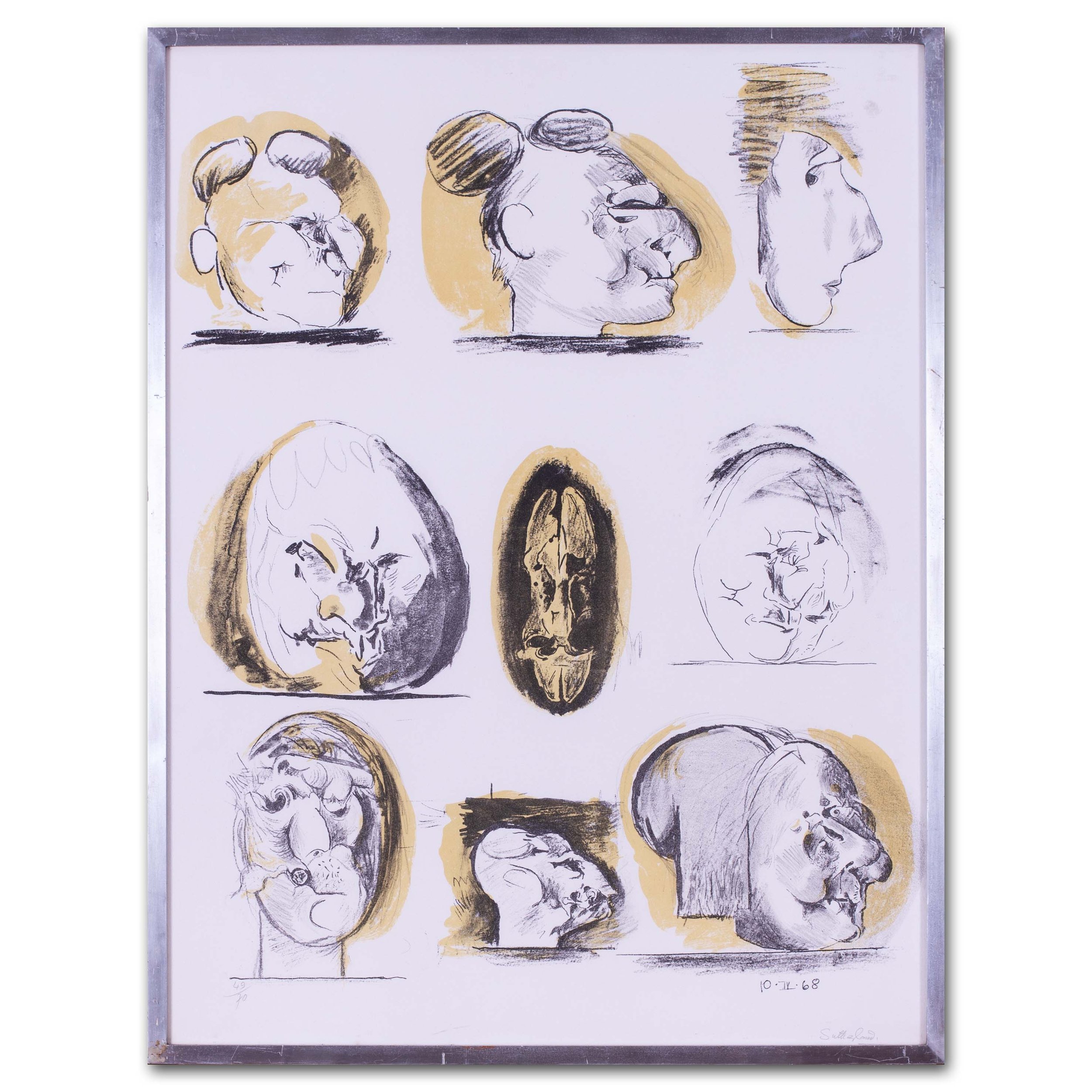Derrick Latimer Sayer, 'Caterpillar'
Derrick Latimer Sayer, (British, 1917 – 1992)
Caterpillar
Signed, inscribed and dated ‘CATERPILLAR’ (lower left), ‘Derrick Sayer 55’ (lower right)
Gouache
7.7/8 x 9.1/4 in. (20 x 23.5 cm.)
Derrick Latimer Sayer (1912–1992) has been described as a Neo-Romantic and pop artist, with a career that spanned from the spiritualism of postwar English landscapes, to the bright, optical playfulness of 1960s Pop art. Sayer had a distinguished start to his career, having studied at the Chelsea School of Art in the early 1930s under Graham Sutherland and Henry Moore.
In 1936 he founded the Mousehole Group Art School in Cornwall with fellow painters George Lamborn and Guy Allen, and for the next few years he exhibited at a number of small local galleries, while also executing commercial advertising work for major companies such as Shell Oil. The 1940s and 50s were a period of widespread travelling, teaching and experimentation for Sayer, as he founded the Army Art Centre in 1945, worked in the South of France in 1949 and displayed works at the Leicester, Redfern and Winton Galleries across the 1950s. In 1966, he took up the helm as the Head of Art at the Chelsea Westminster Adult Education Institute, a position he held until his retirement in 1982. Ten of Derricks works can be found at the Chelsea Westminster Hospital Arts Project, hung alongside a permanent collection that includes Patrick Heron, Howard Hodgkin, and Sian Tucker.
Sayer was known for his studies of female nudes, particularly the examination of the nude in nature, where he contrasted the curving line of the form with the more angular patterns and textures found in the organic environment. He is noted as a member of Neo-Romanticism, a term applied in 1942 to such landscape painters as Paul Nash and Keith Vaughan, whose style harnessed the spirit of the 19th century British landscape tradition with the unnatural colouring and abstraction of postwar modernism.
Derrick Latimer Sayer, (British, 1917 – 1992)
Caterpillar
Signed, inscribed and dated ‘CATERPILLAR’ (lower left), ‘Derrick Sayer 55’ (lower right)
Gouache
7.7/8 x 9.1/4 in. (20 x 23.5 cm.)
Derrick Latimer Sayer (1912–1992) has been described as a Neo-Romantic and pop artist, with a career that spanned from the spiritualism of postwar English landscapes, to the bright, optical playfulness of 1960s Pop art. Sayer had a distinguished start to his career, having studied at the Chelsea School of Art in the early 1930s under Graham Sutherland and Henry Moore.
In 1936 he founded the Mousehole Group Art School in Cornwall with fellow painters George Lamborn and Guy Allen, and for the next few years he exhibited at a number of small local galleries, while also executing commercial advertising work for major companies such as Shell Oil. The 1940s and 50s were a period of widespread travelling, teaching and experimentation for Sayer, as he founded the Army Art Centre in 1945, worked in the South of France in 1949 and displayed works at the Leicester, Redfern and Winton Galleries across the 1950s. In 1966, he took up the helm as the Head of Art at the Chelsea Westminster Adult Education Institute, a position he held until his retirement in 1982. Ten of Derricks works can be found at the Chelsea Westminster Hospital Arts Project, hung alongside a permanent collection that includes Patrick Heron, Howard Hodgkin, and Sian Tucker.
Sayer was known for his studies of female nudes, particularly the examination of the nude in nature, where he contrasted the curving line of the form with the more angular patterns and textures found in the organic environment. He is noted as a member of Neo-Romanticism, a term applied in 1942 to such landscape painters as Paul Nash and Keith Vaughan, whose style harnessed the spirit of the 19th century British landscape tradition with the unnatural colouring and abstraction of postwar modernism.
Derrick Latimer Sayer, (British, 1917 – 1992)
Caterpillar
Signed, inscribed and dated ‘CATERPILLAR’ (lower left), ‘Derrick Sayer 55’ (lower right)
Gouache
7.7/8 x 9.1/4 in. (20 x 23.5 cm.)
Derrick Latimer Sayer (1912–1992) has been described as a Neo-Romantic and pop artist, with a career that spanned from the spiritualism of postwar English landscapes, to the bright, optical playfulness of 1960s Pop art. Sayer had a distinguished start to his career, having studied at the Chelsea School of Art in the early 1930s under Graham Sutherland and Henry Moore.
In 1936 he founded the Mousehole Group Art School in Cornwall with fellow painters George Lamborn and Guy Allen, and for the next few years he exhibited at a number of small local galleries, while also executing commercial advertising work for major companies such as Shell Oil. The 1940s and 50s were a period of widespread travelling, teaching and experimentation for Sayer, as he founded the Army Art Centre in 1945, worked in the South of France in 1949 and displayed works at the Leicester, Redfern and Winton Galleries across the 1950s. In 1966, he took up the helm as the Head of Art at the Chelsea Westminster Adult Education Institute, a position he held until his retirement in 1982. Ten of Derricks works can be found at the Chelsea Westminster Hospital Arts Project, hung alongside a permanent collection that includes Patrick Heron, Howard Hodgkin, and Sian Tucker.
Sayer was known for his studies of female nudes, particularly the examination of the nude in nature, where he contrasted the curving line of the form with the more angular patterns and textures found in the organic environment. He is noted as a member of Neo-Romanticism, a term applied in 1942 to such landscape painters as Paul Nash and Keith Vaughan, whose style harnessed the spirit of the 19th century British landscape tradition with the unnatural colouring and abstraction of postwar modernism.










